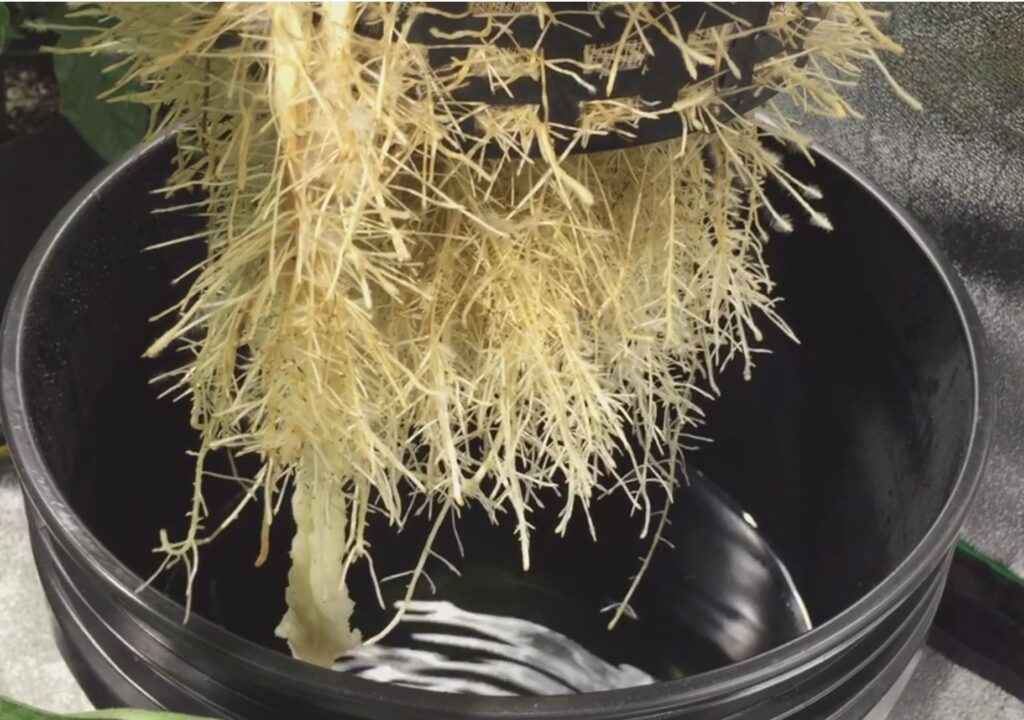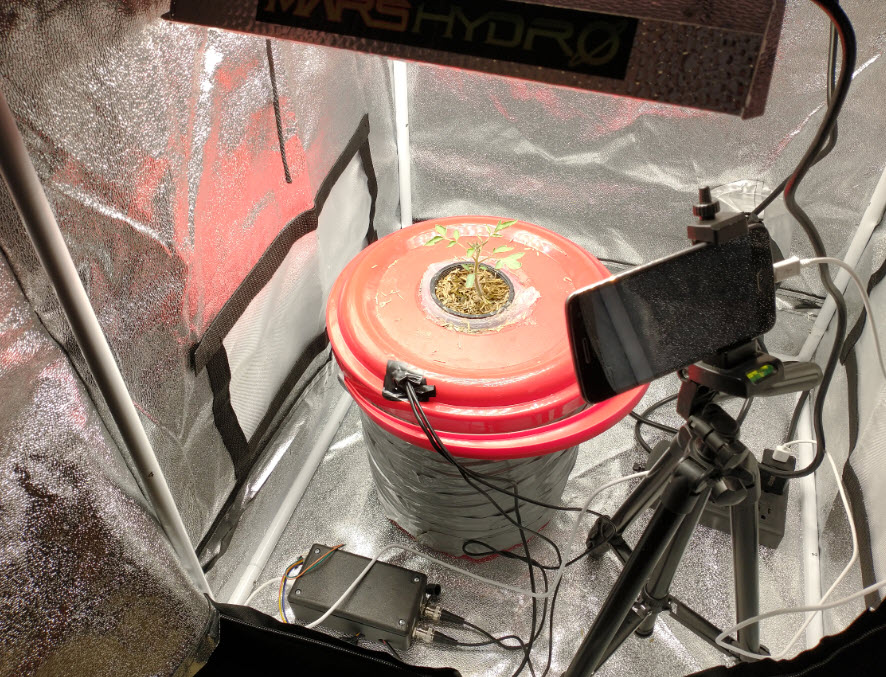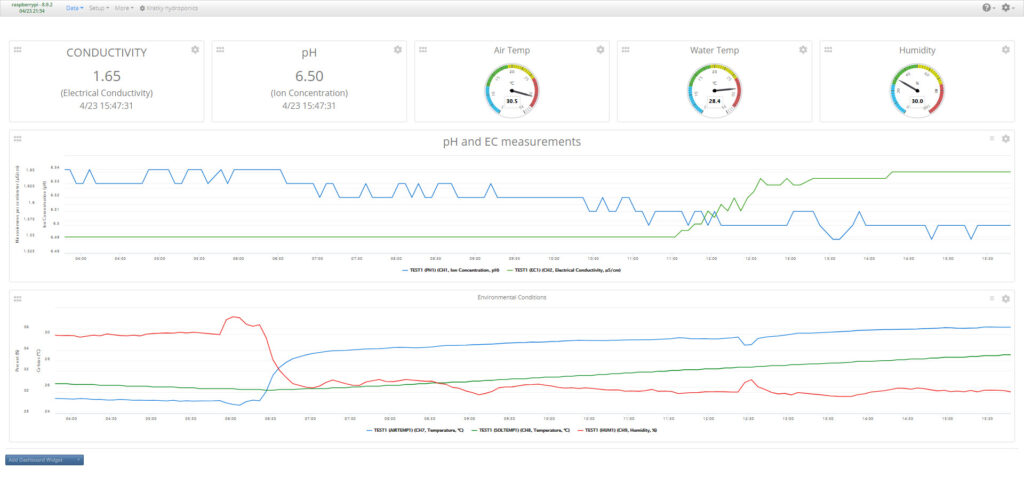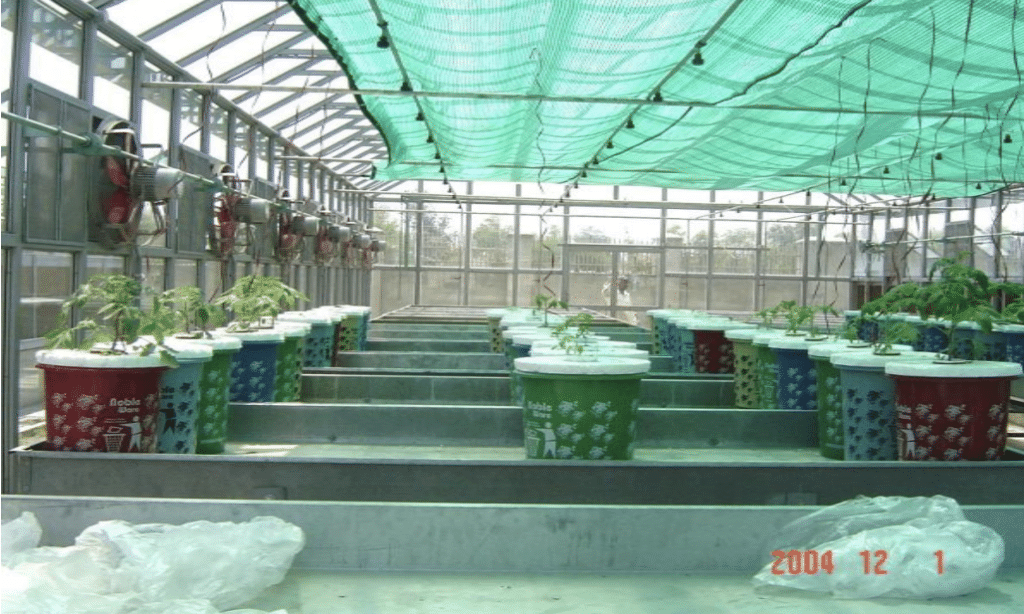How to use organic fertilizers in Kratky hydroponics
I’ve written several posts in this blog about Kratky hydroponics (for example here and here). In this method, you use a bucket, a net pot, a small amount of media, and some nutrient solution, to grow a plant from start to finish. It requires no power or interventions in the case of leafy greens or small flowering plants. However, one of the requirements of a traditional Kratky setup is the use of regular hydroponic nutrients that are created from synthetic inputs. In this post, we are going to talk about the use of organic fertilizers in Kratky hydroponics, which inputs might work, and which will be problematic.
The types of organic inputs
When people talk about “organic fertilizers”, they usually refer to inputs that can be used in the growing of organically certifiable foods. The easiest way to fit this definition is to look at the inputs that are listed by organizations like OMRI. However, among OMRI-listed products, we have significant differences in where the products come from, and this makes a huge difference in whether or not we could use them in a Kratky setup.
For the purposes of this post, we can divide the OMRI-listed products into three categories. We have mined materials, which are extracted and used in their raw form from the earth. We also have animal or vegetable sourced products, which are byproducts of some animal or vegetable industry, and we have processed products, which involve some postprocessing or mixing of products in the former categories.
In the first category of products, we have things like mined magnesium sulfate, potassium sulfate, rock phosphate, sodium nitrate, or limestone. In the second category, we have things like fish emulsion, kelp extract, blood meal, and bone meal, while in the third category we have products like the Biomin series of transition metal chelates or any liquid or solid organic fertilizer blended products.
Why origin matters
The type of organic input matters, because Kratky hydroponic systems lack one important element. Oxygenation.
Since oxygen is not going to be injected into the nutrient solution, any input we use that requires oxygen for decomposition or absorption, or that requires oxygen for its proper uptake, is not going to work well. If you add any animal or vegetable product to a Kratky setup, the lack of oxygen in the solution is going to give way to the growth of anaerobic organisms that are going to be detrimental to plant growth and will lead to root rot.
Things like blood meal – which would be great amendments in soil with good aeration where oxygen can do its job – turn into foul mixes when put into a Kratky setup. This is because a Kratky setup has a stagnant body of water that is going to turn into a very unfavorable medium for plants as soon as we add anything that creates a heavily reducing environment.

Plant roots can tolerate a relatively oxygen-deprived solution to some extent, provided that enough root mass is above the water to take in oxygen, but they cannot tolerate a solution that is rid of all oxygen by anaerobic microbial activity. This is because oxygen deprivation makes the plant more vulnerable to attack by pathogens and hinders the respiration of plant roots, which is needed for root survival.
Which inputs can you use
In general, any input that heavily removes oxygen cannot be used as-is. This means that anything that contains plant or animal proteins, fats or carbohydrates, is not going to work well. Inputs that are heavily rich in bacteria or fungi, even beneficial ones, are also going to fail. This is because these beneficial microorganisms also require oxygen and, when they are put in a Kratky solution and die, they are digested by anaerobic organisms that can take their place.
Animal or vegetable inputs that are relatively inert in origin, such as bone meal, would not be problematic, but their ability to release nutrients is going to be limited in a Kratky solution. Mined inputs are going to be mostly fine. Soluble ones, like mined magnesium sulfate and potassium sulfate, are ideal replacements, as they are chemically identical to the synthetic ones, except for a higher content of impurities due to their raw origin. However, it will be difficult to provide enough nitrogen in an organic Kratky hydroponic setup using only this type of inputs.
A potential solution
Since the problem is mainly oxygen deprivation, we can use an organic hydroponic solution, as long as it is processed for long enough to completely eliminate the oxygen depriving capacity of the inputs. As an example, you can follow my instructions on preparing an organic hydroponic solution. This requires fermenting of the solution for a significant period of time, in order to ensure most of the oxygen requiring reactions have been carried out.
To use this solution in a Kratky setup, we would need to give it a longer period of time. We can verify that the solution is ready for Kratky by using an ORP meter and checking that the solution is at an ORP above 300mV after removing active oxygenation for a day. This means that the solution is able to keep enough dissolved oxygen and that most of the oxygen-hungry processes in the solution are done. This might take substantially longer than the 12-15 days suggested in my original article, probably around 30 days.
Another important step is the removal of bacteria and fungi, which could be very problematic once the solution reaches the stagnant conditions of the Kratky setup. To do this, the easiest solution would be to run the solution through a UV filtering system, in order to make sure all fungi and bacteria are removed from the solution. This might sound counterintuitive, but the Kratky system conditions are not ideal growing conditions for plants and do require us to minimize oxygen sinks in the system.
Conclusion
You can run a Kratky system using an organically derived fertilizer. However, it is not straightforward, as we need to consider that a Kratky system lacks the oxygenation required to carry out a lot of the processes that are taken for granted in organic growing (such as protein decomposition). Without aeration of the solution, we need to provide an organic solution that has already exhausted its hunger for oxygen and can already provide nutrients in a manner that is available to plants. We also need to ensure we add no fungi or bacteria that can work anaerobically and attack roots in the stagnant Kratky solution conditions. We can use tools like long-term fermentation with aeration, ORP meters, and UV systems to achieve this goal.
Have you ever grown in a Kratky setup using organic fertilizers? Let us know about your experience in the comments below!









